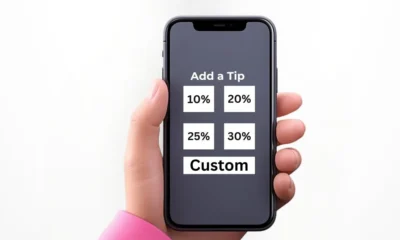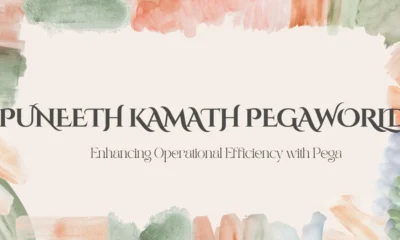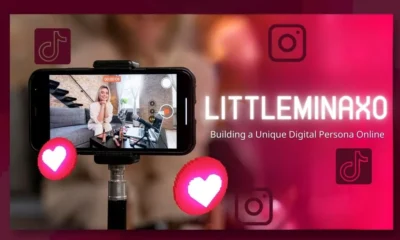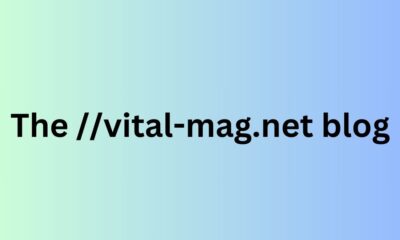TECHNOLOGY
Betechit News Update: The Latest Innovations Shaping Our Future
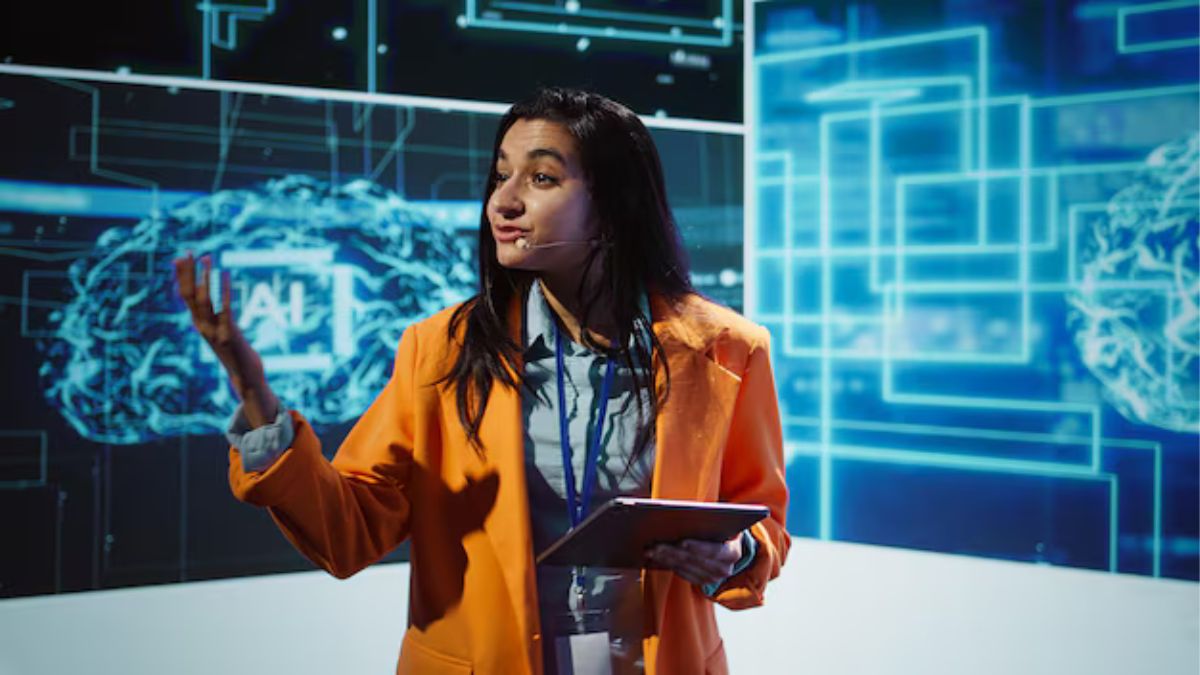
Welcome to the latest edition of Betechit News, your go-to source for all things tech! As we navigate an ever-evolving digital landscape, innovation is happening at breakneck speed. Our mission at Betechit is simple: to keep you informed about groundbreaking advancements that are reshaping our world. From artificial intelligence making waves in various industries to augmented reality blending seamlessly with our daily experiences, the future looks brighter than ever. Join us as we explore these exciting developments and more, uncovering how they will impact our lives and the way we interact with technology.
The Rise of Artificial Intelligence: How AI is Changing the World
Artificial Intelligence is revolutionizing various sectors, from healthcare to finance. Algorithms can analyze vast amounts of data faster than ever. This capability enables professionals to make informed decisions quickly.
In the medical field, AI assists in diagnosing diseases with remarkable accuracy. Machine learning models sift through patient records and imaging results, uncovering patterns that might go unnoticed by human eyes.
Moreover, businesses are leveraging AI for customer service. Chatbots provide immediate responses, enhancing user experience while reducing operational costs.
The creative industry is not left behind either; AI-generated art and music challenge traditional boundaries of creativity.
As we embrace this technology, ethical debates arise about job displacement and privacy concerns. The conversation surrounding responsible AI development must continue alongside its rapid growth.
Virtual and Augmented Reality: Exploring New Frontiers
Virtual and augmented reality are revolutionizing how we interact with digital content. These immersive technologies transport users to new worlds or overlay information onto the real one.
In gaming, VR creates a sense of presence that traditional platforms can’t match. Players step into their favorite universes, experiencing adventures as if they’re right there.
Meanwhile, AR enhances our everyday lives by providing relevant data in real time. Imagine seeing navigation prompts while walking through a city or receiving historical context about landmarks around you.
Educational institutions are also tapping into these innovations. Students can explore ancient civilizations through virtual field trips or dissect virtual organisms without leaving the classroom.
As industries adopt these technologies, possibilities expand beyond entertainment and education. From training simulations to healthcare applications, VR and AR are poised to reshape numerous fields dramatically.
Blockchain Technology: Transforming Industries and Beyond
Blockchain technology is revolutionizing how we think about data integrity and security. At its core, it provides a decentralized ledger that records transactions across multiple computers. This makes tampering nearly impossible.
Industries like finance are already reaping the benefits. Smart contracts automate processes, reducing human error and increasing efficiency. Supply chains also gain transparency, allowing consumers to trace the origin of products with ease.
Healthcare stands to benefit significantly as well. Patient records can be securely shared among providers without compromising privacy. This fosters better collaboration in patient care.
Even art is experiencing a transformation through blockchain with non-fungible tokens (NFTs). Artists can validate their work, ensuring authenticity while reaching global audiences directly.
The ripple effects of this technology extend into various sectors, shaping future innovations in ways we might not yet fully understand.
The Impact of 5G Technology on Our Daily Lives
5G technology is revolutionizing how we connect. With lightning-fast data speeds, it’s transforming everyday activities.
Streaming high-definition content has never been smoother. Buffering is becoming a thing of the past. Whether watching movies or engaging in live gaming, the experience feels seamless.
Smart devices are also benefiting from 5G’s capabilities. Homes are getting smarter with connected appliances and security systems that respond instantly.
In urban areas, 5G enhances public services too. Traffic management systems can now communicate in real-time to reduce congestion and improve safety.
Healthcare is another sector experiencing a shift thanks to this technology. Remote surgeries and telemedicine consultations are possible, bringing expert care closer to those in need.
As more cities adopt this technology, our daily lives will continue evolving at an unprecedented pace, pushing boundaries we once thought impossible.
The Future of Transportation: Autonomous Vehicles and Beyond
The future of transportation is rapidly evolving, with autonomous vehicles leading the charge. These self-driving cars promise to revolutionize how we commute and travel. Imagine a world where traffic jams are minimized and road safety improves dramatically.
Advanced sensors and AI technology enable these vehicles to navigate complex environments, making real-time decisions at lightning speed. This innovation could reduce accidents caused by human error significantly.
Moreover, public transport systems are also adapting. Autonomous buses and shuttles could become common in urban areas, providing efficient services without the need for drivers.
Beyond individual transport, logistics will transform as delivery drones take flight. Expect quicker shipping times and reduced costs for consumers everywhere.
As cities embrace this shift, infrastructure will evolve too—dedicated lanes for autonomous vehicles may soon dot our roadways. The landscape of mobility is changing fast; it’s an exciting time ahead in transportation!
Challenges and Controversies Surrounding Emerging Technologies
Emerging technologies often spark excitement, but they also bring a host of challenges and controversies. Privacy concerns loom large with advancements like facial recognition and data collection.
Ethical dilemmas arise in the realm of artificial intelligence. Decisions made by algorithms can lead to bias or discrimination if not carefully monitored. This creates questions about accountability and transparency.
Moreover, the digital divide remains a pressing issue. While some regions experience rapid technological growth, others are left behind due to lack of access or resources.
Environmental impacts cannot be overlooked either. The production and disposal of new tech can contribute significantly to pollution and waste.
As we navigate these complexities, open discussions become vital for fostering responsible innovation in society’s quest for progress.
Conclusion: Embracing the Possibilities of a Tech
As we stand on the brink of unprecedented technological advancements, the future holds endless possibilities. Betechit’s mission to keep you informed about these innovations is more crucial than ever. With artificial intelligence revolutionizing industries and virtual reality expanding our experiences, it’s clear that technology is not just a tool; it’s an integral part of our lives.
The rise of blockchain continues to reshape how we think about security and transparency in various sectors. Meanwhile, 5G technology enhances connectivity, paving the way for smarter cities and improved communication among devices. The transportation landscape is also evolving rapidly with autonomous vehicles promising safer roads.
However, as we embrace these exciting advancements, it’s essential to address the challenges that accompany them. Ethical dilemmas surrounding AI and privacy concerns related to data usage remind us that progress must be balanced with responsibility.
With every innovation comes an opportunity for growth and transformation. The journey ahead will undoubtedly be dynamic and filled with surprises. By staying informed through platforms like Betechit, we can navigate this ever-changing tech-driven world together—ready to explore all its facets while considering both its rewards and responsibilities.
-

 BIOGRAPHY6 months ago
BIOGRAPHY6 months agoBehind the Scenes with Sandra Orlow: An Exclusive Interview
-

 HOME1 year ago
HOME1 year agoDiscovering Insights: A Deep Dive into the //vital-mag.net blog
-

 HOME1 year ago
HOME1 year agoSifangds in Action: Real-Life Applications and Success Stories
-

 BIOGRAPHY1 year ago
BIOGRAPHY1 year agoThe Woman Behind the Comedian: Meet Andrew Santino Wife



